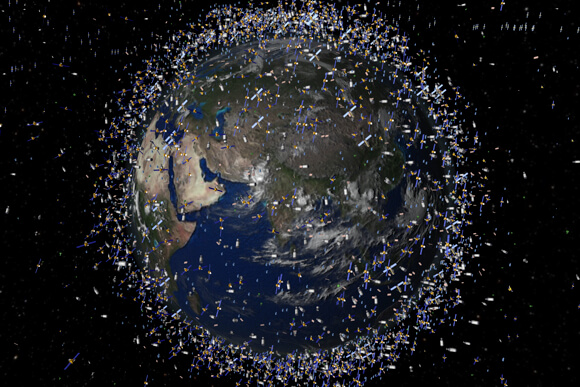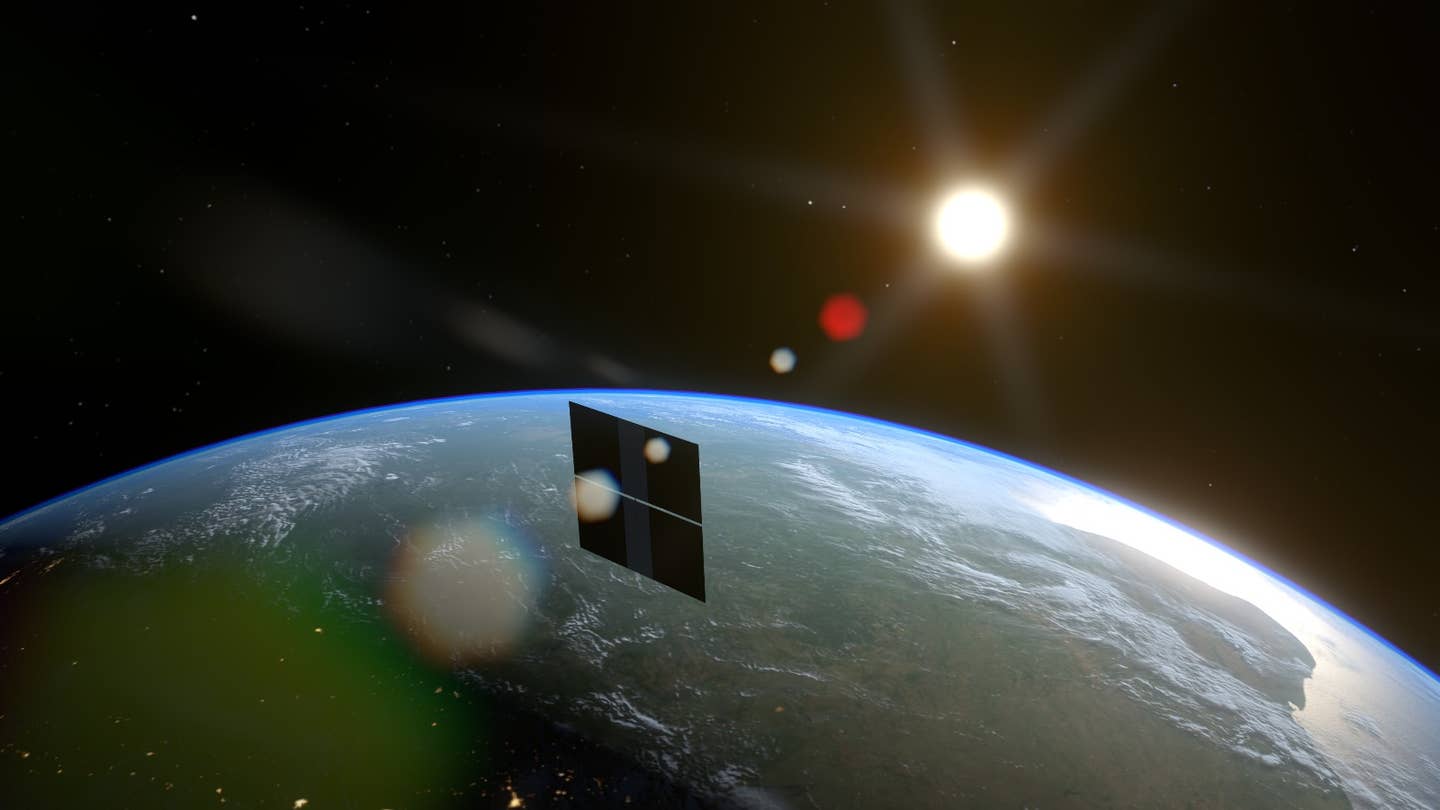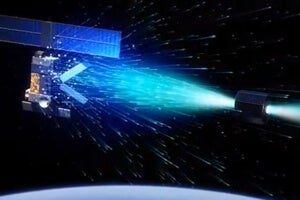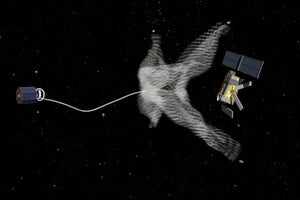Orbital Trash a Problem With No Immediate Solution, Growing Exponentially
Our technology can get us to space, but once there, we still aren’t too flexible. Earth orbit is clogged with debris because we simply don't have an easy way to clean it up. According to the European Space Agency (ESA) there are 17,000 tracked objects in orbit (and a total of 29,000 objects greater than 10 cm) of which only 7% are working satellites. About ten objects a week pass within two kilometers of each other, and ESA initiates three collision avoidance maneuvers yearly.

Share

Artist's impression based on actual space debris data. Debris size is exaggerated compared to the size of the Earth.
Our technology can get us to space, but once there, we still aren’t too flexible. Earth orbit is clogged with debris because we simply don't have an easy way to clean it up.
According to the European Space Agency (ESA) there are 17,000 tracked objects in orbit (and a total of 29,000 objects greater than 10 cm) of which only 7% are working satellites. About ten objects a week pass within two kilometers of each other, and ESA initiates three collision avoidance maneuvers yearly.
The 6th European Conference on Space Debris, recently held at ESA's European Space Operations Centre, concluded space junk is already a problem, but it may soon morph into a full-blown crisis. The amount of debris in orbit has reached a critical point whereafter a so-called “collisional cascading effect” begins to dominate. Unchecked, space junk may well worsen exponentially in the coming years.
Why exponentially?
In February 2009 an irridium satellite collided with a defunct cosmos satellite at a relative speed of 42,000 km/hr. Both satellites were pulverized, adding 2,000 new items of debris to the orbital scrap heap—that’s two objects to 2,000 in one collision. One such collision is enough to accelerate the rate at which junk is accumulating in orbit as well as up the rate and probability at which such collisions will occur in the future.
ESA says, absent countermeasures, the collision rate will eventually be 25 times worse than it is now, making spaceflight in low-Earth orbit nearly impossible.
Experts recommend immediate action. Necessary but not sufficient, all major space agencies should (and most already do) implement plans for disposal of spacecraft after missions end. And because a good portion of orbital debris results from explosion of residual fuel tanks, operators should passivate (yes, it’s a word) spacecraft, that is, switch off batteries, drain fuel, and vent pressure tanks.
Further, ESA recommends sending spacecraft into lower, less trafficked orbits (less than 600 km) where the odds of collision are lower and the orbit will decay naturally, sending the satellites into the atmosphere within 15 years. Another option, if enough fuel remains, is controlled reentry into the atmosphere immediately.
Be Part of the Future
Sign up to receive top stories about groundbreaking technologies and visionary thinkers from SingularityHub.


But active removal of existing space junk is also necessary to avoid collisional cascading. ESA estimates removal of five to ten pieces of debris a year should go a long way to mitigating the effect. But it’s going to take some doing. Most active removal methods are capital-intensive and still being researched.
These include towing debris to safer orbits or into the atmosphere by attaching rockets to objects (either directly or by way of a net), using a sail to increase the surface area and atmospheric drag of objects—even bombarding them with ions from an ion thrust engine.
Further, space debris is a global problem requiring a global solution, and that entails international cooperation and agreement, which can be hard to achieve.
Even if you don’t believe we need to spend billions to send humans to Mars or the Moon or build and launch the next Hubble, there are many Earthly technologies dependent on space-based infrastructure—television, GPS, global telecommunications, weather forecasts, environmental observation. Orbital space is a valuable resource worth preserving. For more, check out the ESA's "Space Debris Story 2013" here:
Image Credit: European Space Agency (ESA)
Jason is editorial director at SingularityHub. He researched and wrote about finance and economics before moving on to science and technology. He's curious about pretty much everything, but especially loves learning about and sharing big ideas and advances in artificial intelligence, computing, robotics, biotech, neuroscience, and space.
Related Articles

Scientists Say We Need a Circular Space Economy to Avoid Trashing Orbit

New Images Reveal the Milky Way’s Stunning Galactic Plane in More Detail Than Ever Before

Future Data Centers Could Orbit Earth, Powered by the Sun and Cooled by the Vacuum of Space
What we’re reading


